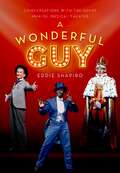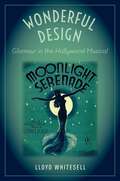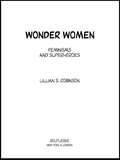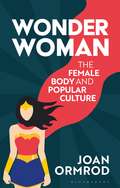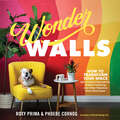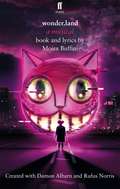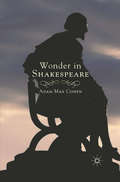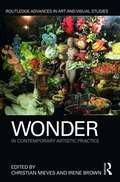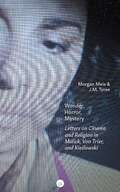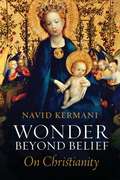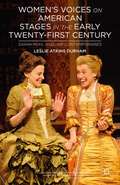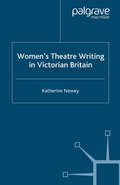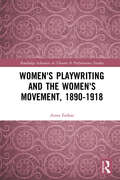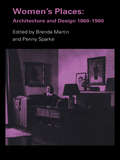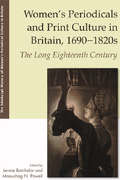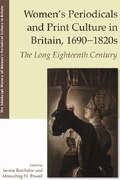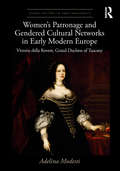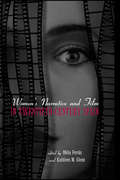- Table View
- List View
A Wonderful Guy: Conversations with the Great Men of Musical Theater
Fascinating, never-before-published interviews with Broadway's leading men offer behind-the-scenes looks at the careers of some of the most beloved perfomers today. In A Wonderful Guy, a follow up to Nothing Like a Dame: Conversations with the Great Women of Musical Theater, theatre journalist Eddie Shapiro sits down for intimate, career-encompassing conversations with nineteen of Broadway's most prolific and fascinating leading men. Full of detailed stories and reflections, his conversations with such luminaries as Joel Grey, Ben Vereen, Norm Lewis, Gavin Creel, Cheyenne Jackson, Jonathan Groff and a host of others dig deep into each actor's career; together, these chapters tell the story of what it means to be a leading man on Broadway over the past fifty years. Alan Cumming described Nothing Like a Dame, as "an encyclopedia of modern musical theatre via a series of tender meetings between a diehard fan and his idols. Because of Eddie Shapiro's utter guilelessness, these women open up and reveal more than they ever have before, and we get to be the third guest at each encounter." A Wonderful Guy brings more fly-on-the-wall opportunities for fans to savour, students to study, and even the unindoctrinated to understand the life of the performing artist.
WONDERFUL DESIGN C: Glamour in the Hollywood Musical
by Lloyd WhitesellAs one of the most beloved and beguiling genres of entertainment, the film musical wears its style ostentatiously. The genre allows for hyperbolic expression, extravagant sonic and visual decor, and extremely stylized forms of movement and performance. By staging a glittering spectacle, by releasing a current of lush sentiment, by unveiling a world of elegance and romance, the film musical woos us with patterns, textures, finesse and sensory display. In this book, author Lloyd Whitesell asks what, exactly, makes film musicals so glamorous. As he argues, glamour projects an aura of ethereality or sophistication by way of suave deportment, sensuous textures, elevated styles, and aesthetically refined effects. Glamour, in other words, is what unites "Cheek to Cheek" from Top Hat and the title song from Beauty and the Beast, each a sonic evocation of luxury, sparkle, grace, and finesse. Whitesell redirects our attention from visual cues like sequins and evening gloves to explore how glamour resides in the sonic. Discussing dozens of musical numbers, analyzing ingenious orchestration, and appraising the distinctive styles of favorite musical stars, Whitesell illuminates fundamental traits of the genre, its aesthetic strategies, and cultural ambitions.
Wonderful Design: Glamour in the Hollywood Musical
by Lloyd WhitesellAs one of the most beloved and beguiling genres of entertainment, the film musical wears its style ostentatiously. The genre allows for hyperbolic expression, extravagant sonic and visual decor, and extremely stylized forms of movement and performance. By staging a glittering spectacle, by releasing a current of lush sentiment, by unveiling a world of elegance and romance, the film musical woos us with patterns, textures, finesse and sensory display. In this book, author Lloyd Whitesell asks what, exactly, makes film musicals so glamorous. As he argues, glamour projects an aura of ethereality or sophistication by way of suave deportment, sensuous textures, elevated styles, and aesthetically refined effects. Glamour, in other words, is what unites "Cheek to Cheek" from Top Hat and the title song from Beauty and the Beast, each a sonic evocation of luxury, sparkle, grace, and finesse. Whitesell redirects our attention from visual cues like sequins and evening gloves to explore how glamour resides in the sonic. Discussing dozens of musical numbers, analyzing ingenious orchestration, and appraising the distinctive styles of favorite musical stars, Whitesell illuminates fundamental traits of the genre, its aesthetic strategies, and cultural ambitions.
Wonder Women: Feminisms and Superheroes
by Lillian RobinsonDrawing upon her long career as a formidable feminist critic yet wearing her knowledge lightly, Lillian Robinson finds the essence of wonder women in our non-animated three-dimensional world. This book will delight and provoke anyone interested in the history of feminism or the importance of comics in contemporary life.
Wonder Women: Feminisms and Superheroes
by Lillian RobinsonDrawing upon her long career as a formidable feminist critic yet wearing her knowledge lightly, Lillian Robinson finds the essence of wonder women in our non-animated three-dimensional world. This book will delight and provoke anyone interested in the history of feminism or the importance of comics in contemporary life.
Wonder Woman: The Female Body and Popular Culture
by Joan OrmrodWonder Woman was created in the early 1940s as a paragon of female empowerment and beauty and her near eighty-year history has included seismic socio-cultural changes. In this book, Joan Ormrod analyses key moments in the superheroine's career and views them through the prism of the female body. This book explores how Wonder Woman's body has changed over the years as her mission has shifted from being an ambassador for peace and love to the greatest warrior in the DC transmedia universe, as she's reflected increasing technological sophistication, globalisation and women's changing roles and ambitions. Wonder Woman's physical form, Ormrod argues, is both an articulation of female potential and attempts to constrain it. Her body has always been an amalgamation of the feminine ideal in popular culture and wider socio-cultural debate, from Betty Grable to the 1960s 'mod' girl, to the Iron Maiden of the 1980s.
Wonder Woman: The Female Body and Popular Culture
by Joan OrmrodWonder Woman was created in the early 1940s as a paragon of female empowerment and beauty and her near eighty-year history has included seismic socio-cultural changes. In this book, Joan Ormrod analyses key moments in the superheroine's career and views them through the prism of the female body. This book explores how Wonder Woman's body has changed over the years as her mission has shifted from being an ambassador for peace and love to the greatest warrior in the DC transmedia universe, as she's reflected increasing technological sophistication, globalisation and women's changing roles and ambitions. Wonder Woman's physical form, Ormrod argues, is both an articulation of female potential and attempts to constrain it. Her body has always been an amalgamation of the feminine ideal in popular culture and wider socio-cultural debate, from Betty Grable to the 1960s 'mod' girl, to the Iron Maiden of the 1980s.
Wonder Walls: How to Transform Your Space with Colorful Geometrics, Graphic Lettering, and Other Fabulous Paint Techniques
by Phoebe Cornog Roxy PrimaThis DIY book teaches wall painting techniques for the creative home-dec enthusiast who wants to create colorful graphic and wallpaper-like designs, including lettering, geometrics, marbling, and more.
wonder.land
by Moira BuffiniAly is struggling with all the pressures of being a teenager: family, school, friends and her own insecurities. Then she discovers wonder.land - a mysterious online world where, perhaps, she can create a whole new life. The web becomes her looking-glass - but will Aly see who she really is?A new musical inspired by Lewis Carroll's iconic story, Moira Buffini's wonder.land was created with Damon Albarn and Rufus Norris and premiered at the Manchester International Festival in July 2015 in a co-production with the National Theatre, London, where it transferred in November of the same year.
Wonder in Shakespeare
by A. CohenIn the first part of this book, Adam Max Cohen embraces the many meanings of wonder in order to challenge the generic divides between comedy, tragedy, history, and romance and suggests that Shakespeare's primary goal in crafting each of his playworlds was the evocation of one or more varieties of wonder.
Wonder in Contemporary Artistic Practice (Routledge Advances in Art and Visual Studies)
by Christian Mieves Irene BrownWonder has an established link to the history and philosophy of science. However, there is little acknowledgement of the relationship between the visual arts and wonder. This book presents a new perspective on this overlooked connection, allowing a unique insight into the role of wonder in contemporary visual practice. Artists, curators and art theorists give accounts of their approach to wonder through the use of materials, objects and ways of exhibiting. These accounts not only raise issues of a particular relevance to the way in which we encounter our reality today but ask to what extent artists utilize the function of wonder purposely in their work.
Wonder in Contemporary Artistic Practice (Routledge Advances in Art and Visual Studies)
by Christian Mieves Irene BrownWonder has an established link to the history and philosophy of science. However, there is little acknowledgement of the relationship between the visual arts and wonder. This book presents a new perspective on this overlooked connection, allowing a unique insight into the role of wonder in contemporary visual practice. Artists, curators and art theorists give accounts of their approach to wonder through the use of materials, objects and ways of exhibiting. These accounts not only raise issues of a particular relevance to the way in which we encounter our reality today but ask to what extent artists utilize the function of wonder purposely in their work.
Wonder, Horror, Mystery: Letters on Cinema and Religion in Malick, Von Trier, and Kieślowski
by J.M. Tyree Morgan MeisWonder, Horror, Mystery is a dialogue between two friends, both notable arts critics, that takes the form of a series of letters about movies and religion. One of the friends, J.M. Tyree, is a film critic, creative writer, and agnostic, while the other, Morgan Meis, is a philosophy PhD, art critic, and practicing Catholic. The question of cinema is raised here in a spirit of friendly friction that binds the personal with the critical and the spiritual. What is film? What’s it for? What does it do? Why do we so intensely love or hate films that dare to broach the subjects of the divine and the diabolical? These questions stimulate further thoughts about life, meaning, philosophy, absurdity, friendship, tragedy, humor, death, and God. The letters focus on three filmmakers who challenged secular assumptions in the late 20th century and early 21st century through various modes of cinematic re-enchantment: Terrence Malick, Lars von Trier, and Krzysztof Kieślowski. The book works backwards in time, giving intensive analysis to Malick’s To The Wonder (2012), Von Trier’s Antichrist (2009), and Kieślowski’s Dekalog (1988), respectively, in each of the book’s three sections. Meis and Tyree discuss the filmmakers and films as well as related ideas about philosophy, theology, and film theory in an accessible but illuminating way. The discussion ranges from the shamelessly intellectual to the embarrassingly personal. Spoiler alert: No conclusions are reached either about God or the movies. Nonetheless, it is a fun ride.
Wonder Beyond Belief: On Christianity
by Navid KermaniWhat happens when one of Germany’s most important writers, himself a Muslim, immerses himself in the world of Christian art? In this book, Navid Kermani is awestruck by a religion full of sacrifice and lamentation, love and wonder, the irrational and the unfathomable, the deeply human and the divine – a Christianity that today’s Christians rarely speak of so earnestly, boldly and enthusiastically. With the open-minded curiosity of a non-believer – or rather a believer in another faith – Kermani engages with Christian art in its great richness and diversity. The result is an enchanting reflection which reinvests in Christianity both its spectacular beauty and its terror. Kermani struggles with the cross, falls in love at the sight of Mary, experiences the Orthodox Mass and appreciates the greatness of St Francis. He teaches us to see the questions of our present-day lives in the pictures of old masters such as Botticelli, Caravaggio and Rembrandt – not with lectures on art history or theology, but with an intelligent eye for the essential details and the underlying relations to seemingly remote worlds, to literature and to mystical Islam. Kermani’s poetic school of seeing draws us in as we are carried along by his unique perspective on Christianity, rekindling our interest in great art at the same time. We are captivated by his unique and brilliant Islamic reading of the West.
Women's Voices on American Stages in the Early Twenty-First Century: Sarah Ruhl and Her Contemporaries
by L. DurhamWomen are at the center of American theatre and have the potential to shape the cultural imagination of theatre-goers as a complex new era unfolds. Sarah Ruhl, one of the twenty-first century's most honored playwrights, is read in concert with her contemporaries whose writing also wrestles with the vexing issues facing Americans in the new century.
Women's Theatre Writing in Victorian Britain
by K. NeweyWomen's Theatre Writing in Victorian Britain is the first book to make a comprehensive study of women playwrights in the British theatre from 1820 to 1918. It looks at how women playwrights negotiated their personal and professional identities as writers, and examines the female tradition of playwriting which dramatises the central experience of women's lives around the themes of home, the nation, and the position of women in marriage and the family. The book also includes an extensive Appendix of authors and plays, which will be a useful reference tool for students and scholars in nineteenth-century studies and theatre historians.
Women's Playwriting and the Women's Movement, 1890-1918 (Routledge Advances in Theatre & Performance Studies)
by Anna FarkasThe influence of the women’s movement has long been a scholarly priority in the study of British women’s drama of the late nineteenth and early twentieth centuries, but previous scholarship has largely clustered around two events: the New Woman in the 1890s and the suffrage campaign in the years before the First World War. Women’s Playwriting and the Women’s Movement, 1890–1918 is the first designated study of British women’s drama from a period of exceptional productivity and innovation for female playwrights. Both the British theatre and women’s position within British society underwent fundamental changes in this period, and this book shows how female dramatists carefully negotiated their position in the heated debates about women’s rights that occurred at this time, while staking out a place for themselves in an evolving theatrical landscape. Farkas also identifies the women’s movement as a key influence on the development of female-authored drama between 1890 and 1918, but argues that scholarly prioritizing of the "radicalism" of work associated with the New Woman and the suffrage campaign has had a distorting effect in the past. Ideal for scholars of British and Victorian theatre, Women’s Playwriting and the Women’s Movement, 1890–1918 offers a new perspective which emphasizes the complexity of women playwrights’ engagement with first-wave feminism and links it to the diversification of the British theatre in this period.
Women's Playwriting and the Women's Movement, 1890-1918 (Routledge Advances in Theatre & Performance Studies)
by Anna FarkasThe influence of the women’s movement has long been a scholarly priority in the study of British women’s drama of the late nineteenth and early twentieth centuries, but previous scholarship has largely clustered around two events: the New Woman in the 1890s and the suffrage campaign in the years before the First World War. Women’s Playwriting and the Women’s Movement, 1890–1918 is the first designated study of British women’s drama from a period of exceptional productivity and innovation for female playwrights. Both the British theatre and women’s position within British society underwent fundamental changes in this period, and this book shows how female dramatists carefully negotiated their position in the heated debates about women’s rights that occurred at this time, while staking out a place for themselves in an evolving theatrical landscape. Farkas also identifies the women’s movement as a key influence on the development of female-authored drama between 1890 and 1918, but argues that scholarly prioritizing of the "radicalism" of work associated with the New Woman and the suffrage campaign has had a distorting effect in the past. Ideal for scholars of British and Victorian theatre, Women’s Playwriting and the Women’s Movement, 1890–1918 offers a new perspective which emphasizes the complexity of women playwrights’ engagement with first-wave feminism and links it to the diversification of the British theatre in this period.
Women's Places: Architecture and Design 1860-1960
by Brenda Martin Penny SparkeWhat was different about the environments that women created as architects, designers and clients at a time when they were gaining increasing political and social status in a male world? Through a series of case studies, Women's Places: Architecture and Design 1860-1960, examines in detail the professional and domestic spaces created by women who had money and the opportunity to achieve their ideal. Set against a background of accepted notions of modernity relating to design and architecture of the late 19th and early 20th centuries, this book provides a fascinating insight into women's social aspirations and identities. It offers new information and new interpretations in the study of gender, material culture and the built environment in the period 1860-1960.
Women's Places: Architecture and Design 1860-1960
by Brenda Martin Penny SparkeWhat was different about the environments that women created as architects, designers and clients at a time when they were gaining increasing political and social status in a male world? Through a series of case studies, Women's Places: Architecture and Design 1860-1960, examines in detail the professional and domestic spaces created by women who had money and the opportunity to achieve their ideal. Set against a background of accepted notions of modernity relating to design and architecture of the late 19th and early 20th centuries, this book provides a fascinating insight into women's social aspirations and identities. It offers new information and new interpretations in the study of gender, material culture and the built environment in the period 1860-1960.
Women's Periodicals and Print Culture in Britain, 1690-1820s: The Long Eighteenth Century
by Jennie Batchelor Manushag N. PowellDefinitive modern edition of Stevenson’s intriguing account of his emigration from Scotland to California
Women's Periodicals and Print Culture in Britain, 1690-1820s: The Long Eighteenth Century (The\edinburgh History Of Women's Periodical Culture In Britain Ser.)
by Jennie Batchelor Manushag N. PowellExamines the practices of independent digital feature-filmmaking in contemporary Britain
Women’s Patronage and Gendered Cultural Networks in Early Modern Europe: Vittoria della Rovere, Grand Duchess of Tuscany (Visual Culture in Early Modernity)
by Adelina ModestiThis book examines the sociocultural networks between the courts of early modern Italy and Europe, focusing on the Florentine Medici court, and the cultural patronage and international gendered networks developed by the Grand Duchess of Tuscany, Vittoria della Rovere. Adelina Modesti uses Grand Duchess Vittoria as an exemplar of pan-European 'matronage' and proposes a new matrilineal model of patronage in the early modern period, one in which women become not only the mediators but also the architects of public taste and the transmitters of cultural capital. The book will be the first comprehensive monographic study of this important cultural figure. This study will be of interest to scholars working in art history, gender studies, Renaissance studies and seventeenth-century Italy.
Women’s Patronage and Gendered Cultural Networks in Early Modern Europe: Vittoria della Rovere, Grand Duchess of Tuscany (Visual Culture in Early Modernity)
by Adelina ModestiThis book examines the sociocultural networks between the courts of early modern Italy and Europe, focusing on the Florentine Medici court, and the cultural patronage and international gendered networks developed by the Grand Duchess of Tuscany, Vittoria della Rovere. Adelina Modesti uses Grand Duchess Vittoria as an exemplar of pan-European 'matronage' and proposes a new matrilineal model of patronage in the early modern period, one in which women become not only the mediators but also the architects of public taste and the transmitters of cultural capital. The book will be the first comprehensive monographic study of this important cultural figure. This study will be of interest to scholars working in art history, gender studies, Renaissance studies and seventeenth-century Italy.
Women's Narrative and Film in 20th Century Spain
by Kathleen GlennWomen's Narrative and Film in 20th Century Spain examines the development of the feminine cultural tradition in spain and how this tradition reshaped and defined a Spanish national identity. Each chapter focuses on representation of autobiography, alienation and exile, marginality, race, eroticism, political activism, and feminism within the ever-changing nationalisms in different regions of Spain. The book describes how concepts of gender and difference shaped the individual, collective, and national identities of Spanish women and significantly modified the meaning and representation of female sexuality.
